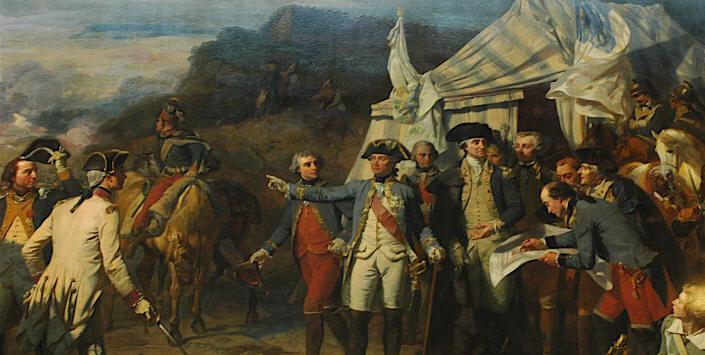
COURSE DESCRIPTION
The students will study history and the impact that historical events have on the United States. The curriculum spans from colonial times through present day. Students will be given opportunities to analyze and evaluate the impact of these historical events. Diverse instructional methods are used throughout this course including interactive presentations, DBQs, unit assessments, and research projects. Lessons are designed using a best practice model that includes scaffolding, vocabulary, guided practice, independent practice, and written response opportunities for students to synthesize, evaluate, and debate topics. New York Learning Standards and unit alignment were utilized in building this curriculum, as well as the Common Core Literacy Standards in the History/Social Studies, Science, and Technical Subjects.
CHAPTERS
Ch.1 - Geography of the United States
Ch.2 - The Constitution: Foundation of American Society
Ch.3 - The Constitution Tested: Nationalism and Sectionalism
Ch.4 - Industrialization of the United States: Reconstructed Nation
Ch.5 - Industrialization of the United States: Rise of the American Business, Industry, and Labor
Ch.6 - Industrialization of the United States: Adjusting Society to Industrialism
Ch.7 - Progressive Movement
Ch.8 - War and Prosperity (1917 - 1929)
Ch.9 - The Great Depression
Ch.10 - Peace in Peril (1933 - 1950)
Ch.11 - Peace with Problems (1945 - 1960)
Ch.12 - A World in Uncertain Times: 1950s to 1960s
Ch.13 - Limits of Power: Turmoil at Home and Abroad (1965 - 1972)
Ch.14 - Trend Toward Conservatism (1972 - 1985)
Ch.15 - Approaching the Next Century (1986- 1999)
Ch.16 - Supreme Court Case Project
COURSE OBJECTIVES
Students will:
master a broad understanding of historical knowledge and chronology
understand its principal themes (including changes in political organization, long-term trends in diplomacy and economic policy, the interaction of various ideas, cultures, and social practices, and movements in American literary and cultural expression)
interpret multiple perspectives in historical scholarship
work effectively with others to debate issues in American history


